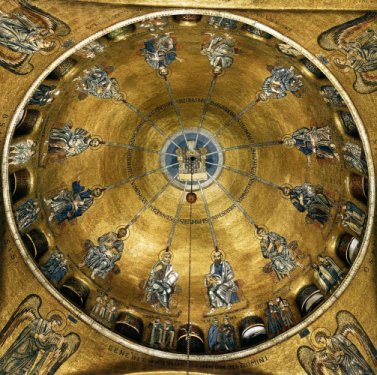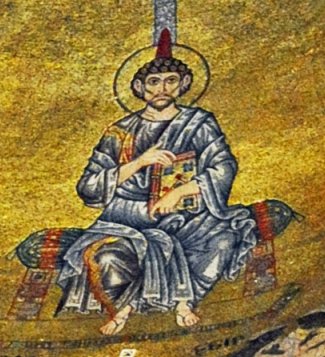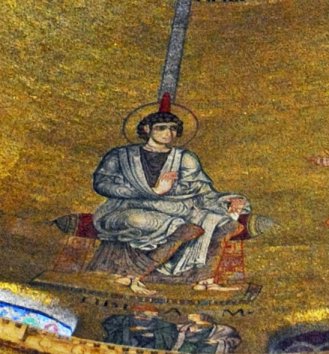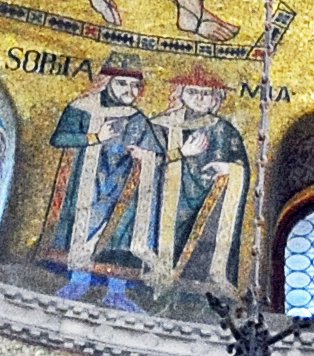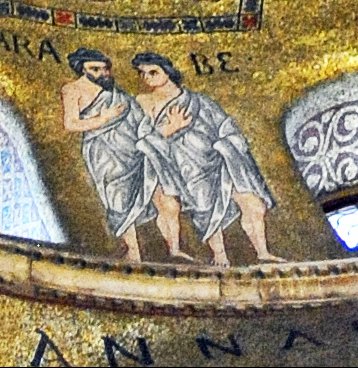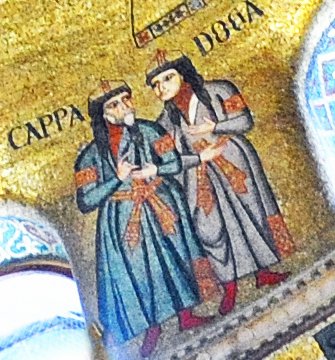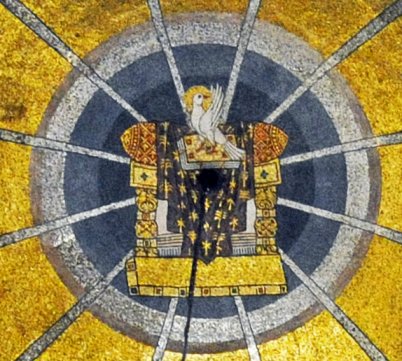|
Pentecost at San Marco |
|
|
|
|
| A cupola mosaic
from the
Basilica of San Marco, Venice. The mosaic has been restored piecemeal over
the years, and it isn't always easy to work out what is original and
what isn't, but it certainly retains the Byzantine feel of the
original. It is not a representation of the Pentecostal narrative,
but a visual image of the theology behind it. There are twelve figures seated on thrones; nine of the Apostles (James the Less and Jude didn't make it) plus St Paul, St Luke and St Mark who of course weren't at the event but were important figures in the spreading of the Christian message, which is at the heart of the image. The Evangelists are differentiated from the other Apostles by facing forward, carrying books, and having gold folds on their drapery. They are at right angles to each other, forming a St Andrew's cross, which is accentuated by the angels in the pendentives. |
|
|
|
|
The figures below the Apostles. A wide range of figures appear here in pairs, dressed according to their nationality. They represent not only the languages spoken by the Apostles and those people who heard them, but also the places that will receive the words of the gospel writers. |
|
|
|
|
|
|
|
At the centre of the mosaic is the throne, known as the Hetoimasia. The Byzantine Pentecostal theology extends the idea of the descent of the Holy Spirit to include the completion of the apostles' task on Earth. This is the throne prepared for the second coming of Christ, the final revelation. The throne, the dove and the gospels below also represent the Trinity, and Pentecost Sunday is also known as Trinity Day in the Orthodox church. |
|
|
|
|
